Thinking about a trip to the Dorset coast? It’s all about striking that sweet spot—chasing ancient fossils, lounging on those gorgeous beaches, and sidestepping the summer crowds. From early spring to late autumn, especially right after high tide, you’ll find the best fossil hunting conditions. The quieter months mean fewer people and more fossils exposed. If you want peaceful days by the sea and easy access to those famous coastal sites, it’s honestly best to steer clear of peak summer holidays.
Dorset really does have a bit of everything—one moment you’re scrambling over the Jurassic Coast’s rocky edges searching for ammonites, and the next you’re taking it slow on the sand. Timing matters. Whether you’re hoping to score fossils at Charmouth or just want those classic sea views without the chaos, planning ahead pays off.

I’ve learned that picking the right window to visit lets you soak up more of what makes Dorset magical, minus the stress of packed beaches. In my own trips, a dash of timing and some local know-how always make things run smoother.
Understanding Dorset’s Jurassic Coastline
The Jurassic Coast in Dorset runs for 95 miles along England’s south coast. It’s legendary for fossils, wild rock formations, and its UNESCO World Heritage Site status. Honestly, I can’t think of a better spot in the UK to get up close with Earth’s history.
Why the Jurassic Coast Is a UNESCO World Heritage Site
UNESCO gave the Jurassic Coast its title because the geology and scenery are just that impressive. The stretch runs from Orcombe Point in East Devon all the way to Studland Bay in Dorset. That’s 185 million years of history, covering the Triassic, Jurassic, and Cretaceous periods.
What really blows me away is how you can actually see the layers of time stacked in the cliffs. It’s like a storybook of life, climate, and the world as it used to be. UNESCO picked the area for its mix of scientific value and natural beauty. Not many places let you walk through so many eras in a single afternoon.
Geological History and Formation of Fossil-Rich Cliffs
Natural forces shaped the cliffs here over millions of years. Water, ice, and wind worked together, slowly carving out the landscape and exposing ancient rock layers. You’ll find limestone, clay, and sandstone—each one hiding a different chapter of the past.
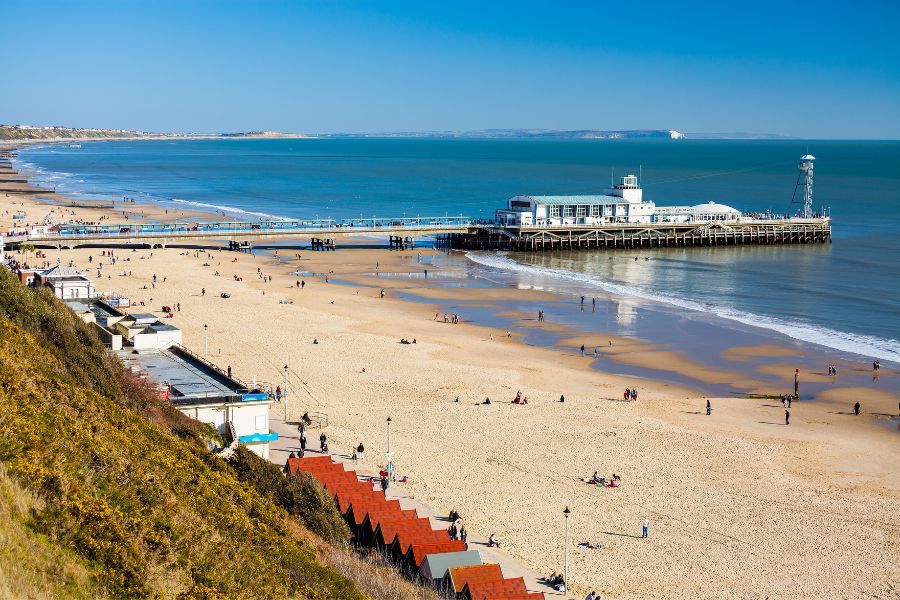
Rock falls and landslides happen often, and they reveal new layers, which is fantastic for fossil hunting. Fossils range from tiny shells to massive marine reptiles. The coastline keeps changing, so there’s always something new to find.
Key geological facts:
| Period | Approx. Age (million years) | Key Fossils |
|---|---|---|
| Triassic | 250–200 | Early reptiles |
| Jurassic | 200–145 | Ammonites, marine reptiles |
| Cretaceous | 145–66 | Dinosaur footprints |
Key Fossil Sites: Lyme Regis, Charmouth, and Beyond
Lyme Regis and Charmouth are the big names for fossil hunting here. Walking around Lyme Regis, you’ll spot fossil shops, guided walks, and a museum dedicated to Mary Anning, the legendary fossil hunter. After storms, the beaches often cough up ammonites and belemnites.
Charmouth’s Heritage Coast Centre runs fossil hunting tours and shares safety tips. Lots of families poke around the shingle at low tide. Beyond these, spots like Seatown and Burton Bradstock can be good too, but Lyme Regis and Charmouth are the easiest and safest for beginners.
If you’re itching to find your own fossil, these towns are a solid bet. I’d say joining a guided walk with a local expert really ups your chances.
Best Time for Fossil Hunting Along the Dorset Coast
Stormy weather, the right tides, and dodging busy months all shape your fossil hunting adventure. I’ve found that picking the best beach conditions means more fossils and fewer crowds.
How Weather, Storms, and Tides Affect Fossil Exposure
After a big storm or heavy rain, the cliffs get softer. Waves and rain knock bits of cliff loose, freeing fossils that were hidden inside.
When the tide’s out, more of the beach gets revealed. That’s the best time for spotting fossils left on the sand after cliff falls. On stormy days, I usually find more fossils on the foreshore than during calm spells.
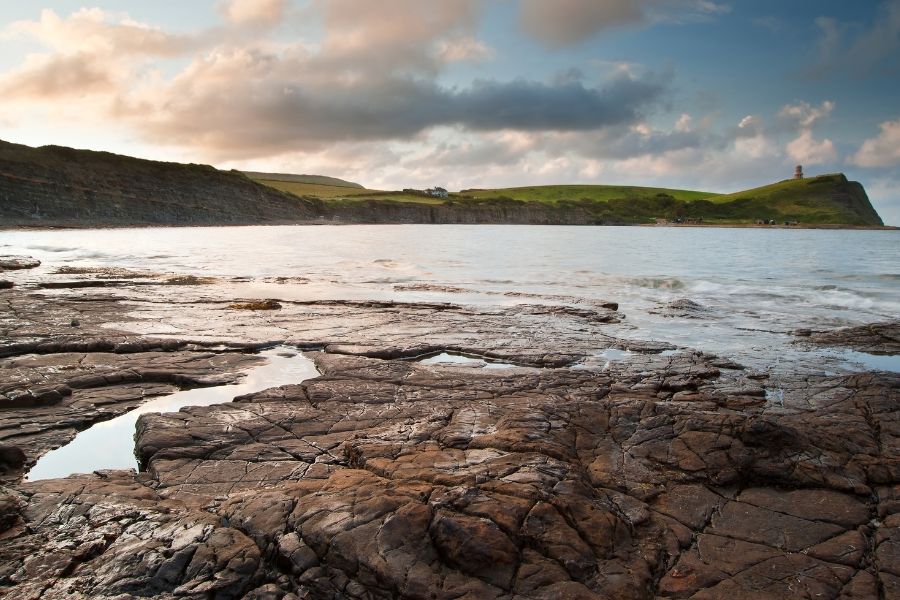
Here’s a quick look at how conditions can help:
| Condition | Effect on Fossil Finding |
|---|---|
| Stormy/Rainy | Uncovers new fossils |
| Low Tide | Exposes more beach area |
| High Tide | Limits access to fossil spots |
I always check the forecast before heading out. If a storm just passed, I get excited—that’s when fossil collecting gets good.
Seasonal Considerations: Avoiding the Summer Swarm
Summer turns Dorset’s beaches into a magnet for tourists. Popular spots like Lyme Regis and Charmouth get packed. Fossil hunting gets tricky when everyone’s searching at once.
Late autumn, winter, or early spring? That’s my favorite time. There’s space to breathe, and the fossils haven’t all been snatched up. Winter storms do half the work by uncovering new treasures.
If you go in the colder months, bring waterproof boots and warm layers. Sure, it’s not sunbathing weather, but the peace and better fossil finds make it a win in my book.
Reading Tide Times and Optimal Conditions for Fossil Collecting
Knowing the tide times is essential for a safe and fun fossil hunt. I like to start just before low tide, when there’s the most beach to explore. The best finds usually turn up on the exposed foreshore.
I check tide tables online or at beach visitor centers. Apps make it easy to keep track. Heading out at high tide isn’t just tough—it can be dangerous. The waves reach the cliffs and cut off the best fossil spots.
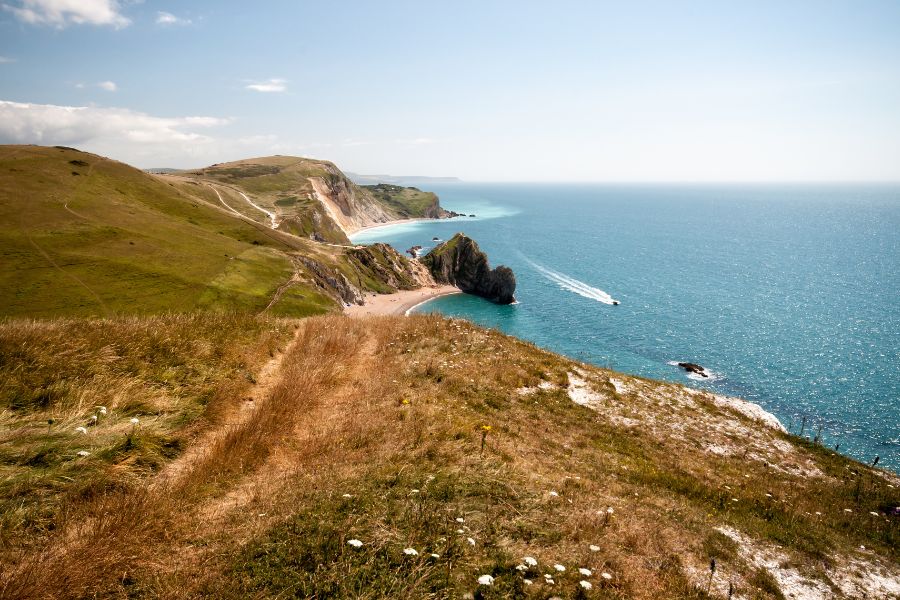
Here’s my quick checklist:
- Check the day’s low tide time.
- Arrive about 30 minutes before low tide.
- Keep an eye on the tide coming in, so I don’t get caught.
Good timing keeps things safe and really ups your odds of finding something cool.
Planning a Fossil Hunting Expedition
When I put together a fossil hunting trip on the Dorset coast, I focus on bringing the right gear, staying safe, and sticking to the rules. Guided walks and a bit of know-how make it fun for everyone, from first-timers to seasoned fossil fans.
Essential Gear: Fossil Hammer, Chisel, and More
I always pack a fossil hammer (geological hammer) and a chisel for splitting rocks and prying out fossils. You need these tools to open up limestone or clay, where little ammonites or belemnites hide.
A sturdy backpack holds my gear, and I toss fossils into a strong bag—plastic or cloth, either works. Safety goggles keep my eyes safe from flying chips. Gloves are handy for sharp rocks and rough tools.
I also bring a hand lens for close-ups, a notebook for scribbles and sketches, and a basic first-aid kit just in case. Some spots only allow hand collecting, so I always check local rules before swinging a hammer.
Safety Tips: Unstable Cliffs and Sturdy Footwear
The cliffs are stunning, but they’re not always stable. Rockfalls happen, especially after rain or winter storms. I never stand right under steep or crumbly cliffs.
Good boots with grip are a must—slippery rocks and uneven sand can catch you off guard. I keep an eye on tide times, because the sea can sneak up and cut off your exit.
I don’t climb cliffs or dig into them. Most fossils turn up loose on the beach after the waves do their work. Carrying a map or using a tide app helps me keep track of where I am and what the sea’s doing.
Family-Friendly and Guided Fossil Walks
If you’re new or bringing kids, go for a guided fossil walk. Local guides know the best spots and share tips for safe collecting. Places like Lyme Regis and Charmouth have plenty of guided hunts.
These walks come with stories about the fossils, the coast’s history, and famous discoveries like Mary Anning’s. I check with visitor centers or museums for walk times and booking info.
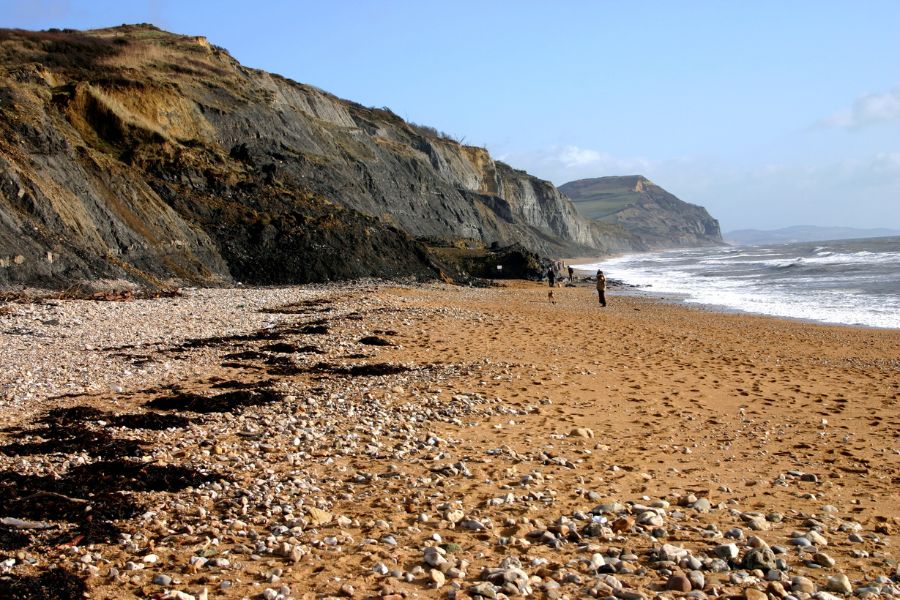
Kids love learning how to hunt for fossils, and guides keep everyone away from sketchy cliffs or tricky tides. I find guided walks both educational and a lot less stressful than going solo.
Code of Conduct for Responsible Fossil Hunters
I stick to a simple code to keep the coast and its fossils safe. I only take what I can carry and leave big or rare finds for the pros—if I spot something amazing, I tell a museum or visitor center.
Digging into cliffs? That’s a no-go. I use my chisel and hammer only on loose rocks, never on stable outcrops or risky spots. Before I start, I double-check local rules.
Any fossils I find are for personal study unless they’re special. I avoid damaging plants, wildlife, or the landscape. Following these guidelines keeps Dorset’s fossil beaches awesome for everyone.
Discovering Fossils: What You Can Find
Dorset’s Jurassic Coast hides a wild range of fossils in its beaches and cliffs. There are tiny, detailed treasures and the occasional jaw-dropping chunk from ancient creatures.
Common Fossils: Ammonites, Belemnites, and Brachiopods
Walking along Lyme Regis or Charmouth, I mostly find ammonites. These spiral-shaped shells can be as small as a coin or as big as your hand. They belonged to squid-like animals from over 100 million years ago.
Belemnites are another classic. They look like smooth, bullet-shaped stones and are actually the fossilized remains of a squid’s internal skeleton—usually brown or grey.

Brachiopods pop up less often, but you’ll spot them now and then. They look like little clams but are a different kind of shellfish. Here’s a quick cheat sheet:
| Fossil | Shape | Origin |
|---|---|---|
| Ammonite | Spiral | Squid-like sea animal |
| Belemnite | Bullet | Squid-like sea animal |
| Brachiopod | Bivalve | Marine shellfish |
Spectacular Finds: Dinosaurs, Marine Reptiles, and Microfossils
Occasionally, you might stumble on something rare. Some lucky hunters find bits of dinosaur bone or teeth stuck in the rock. Remains from giants like ichthyosaurs or plesiosaurs sometimes show up in cliffs after landslides.
A few beachcombers have found crinoid fossils, which look like tiny star-shaped or disc-shaped columns. They’re the ancient stalks of marine animals.
Microfossils are everywhere in the shale and clay. These tiny bits—like echinoids or tiny shell fragments—need a sharp eye and a magnifying lens. After storms, I’ve sometimes found fossilized shark fins or fish parts too.
Tips for Identifying Fossils Accurately
If I’m not sure if something’s a fossil or just a rock, I look for repeating patterns or symmetry. That usually hints at a shell, bone, or coral. Real fossils feel different—there’s often a texture or shape that stands out from the pebbles.
I use a soft brush or cloth to clean off loose sand and mud. I avoid using force since fossils can be fragile. Local guides or charts help me match my finds to known samples.
Sometimes I join a guided walk, which makes spotting and identifying fossils much easier. Local experts and guidebooks are lifesavers when it comes to finding the good stuff and avoiding rookie mistakes.
Top Dorset Beaches for Fossil Hunting and Beach Days
Dorset’s coastline really does have some of the best spots for fossil hunting and lazy beach days. I’ve wandered these shores many times, and they’re not just for serious fossil fans—families, swimmers, and anyone who loves a good picnic will find something to love here.
Many beaches feel safe and welcoming. Some even have visitor centers or friendly experts ready to help you get the most out of your day.

The beaches themselves? They’re perfect for everything from long walks to building sandcastles. Sometimes I just sit and watch the waves, thinking about the ancient creatures hidden beneath my feet.
Exploring Charmouth Beach and Heritage Coast Centre
Charmouth Beach has to be one of the best places for fossil hunting. The cliffs almost spill fossils—ammonites and belemnites show up all the time. The beach is easy to reach, and it’s wide and flat, making it comfortable for kids and grown-ups to explore.
Right next to the sand, the Charmouth Heritage Coast Centre waits with all sorts of helpful info. I always pop in first, since the staff are full of advice and safety tips. The center runs fossil displays, guided walks, and hands-on activities for kids.
If you want to beat the crowds and maybe find the best fossils, try coming early or at low tide. I’ve had my best luck then.
Don’t forget sturdy shoes and maybe a small hammer—though, don’t go digging in the cliffs. That’s a no-go for safety. Checking tide times is a must, too. It’s no fun getting stuck!
Lyme Regis Museum and Fossil Walks
Lyme Regis has this legendary reputation for fossils, and honestly, it lives up to the hype. The Lyme Regis Museum sits right by the sea, on the spot where Mary Anning once lived—her story is endlessly fascinating if you ask me.
Inside, you’ll find local geology and Jurassic Coast history brought to life. The museum’s fossil walks are a highlight. I think they’re perfect for beginners, since the guides show you exactly where to look and how to spot something real (and legal).
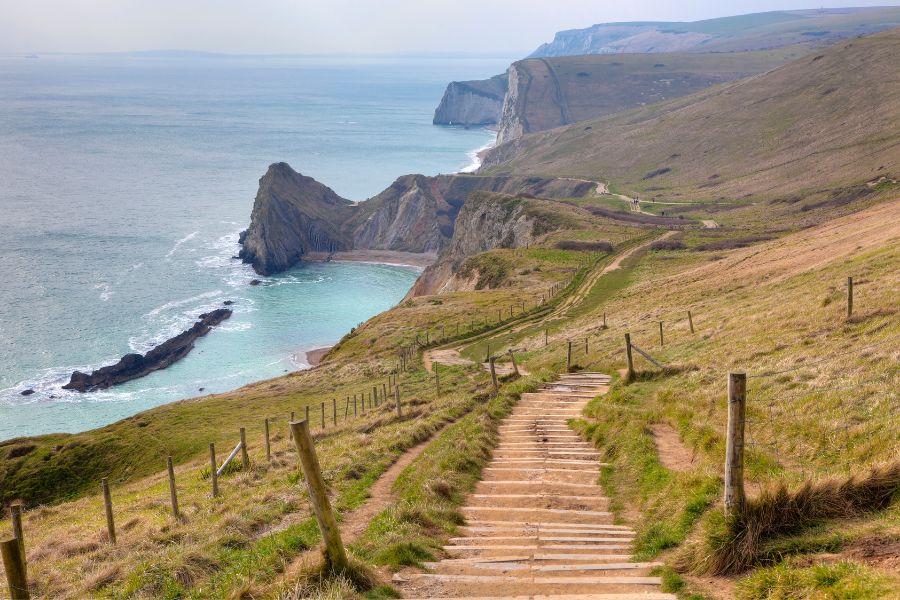
Ammonite Pavement, Monmouth Beach, and the main town beach all make great hunting grounds. You don’t need to be an expert—just patient and ready to look closely.
Hidden Gems: Kimmeridge Bay, Seatown, Ringstead Bay, and Burton Bradstock
Kimmeridge Bay feels quieter than the big-name spots. I love poking around the rock pools and ledges here. Marine fossils turn up, and sometimes I see snorkelers or wildlife fans just soaking it all in.
Seatown is tiny, but that’s part of its charm. If you get there early, you might have the pebbly beach almost to yourself. Fossils do show up, and the peaceful walks are hard to beat.
Ringstead Bay and Burton Bradstock stretch out with wide beaches and sweeping views. They aren’t quite as fossil-packed as Charmouth or Lyme Regis, but you might stumble across fossilized shells or ancient rocks if you’re lucky. I find these beaches perfect for a laid-back day—fewer people, clean water, and space to breathe.
Here’s a quick comparison:
| Beach | Fossil Type | Facilities | Best For |
|---|---|---|---|
| Charmouth | Ammonites, belemnites | Visitor centre | Fossil hunting, families |
| Lyme Regis | Ammonites, marine reptiles | Museum | Guided walks, history |
| Kimmeridge Bay | Marine fossils | Car park, toilets | Snorkeling, fossil spots |
| Seatown | Mixed, less dense | Small cafe | Quiet walks, scenery |
| Ringstead Bay | Occasional shells | Car park | Swimming, picnics |
| Burton Bradstock | Rare shells, rocks | Cafe, toilets | Beach days, fewer crowds |
Practical Tips for a Successful Dorset Adventure
A little planning really goes a long way when you’re exploring the Jurassic Coast. I’ve learned that knowing how to get around, what to pack, and where to look for wildlife can make the whole trip smoother and way more fun.
Using Public Transport and Planning Your Route
You don’t need a car to see the best of Dorset. Trains take you straight to main towns like Weymouth and Poole, and local buses link up places like Lyme Regis, Charmouth, and West Bay. I always check bus timetables before heading out—some routes run less often outside summer or on weekdays.
Travel apps help me keep up with schedule changes or route tweaks. If I’m heading somewhere remote, like Golden Cap or the East Devon coast, I double-check walking distances from the nearest bus stop. That’s saved me a few long hikes I didn’t plan for!
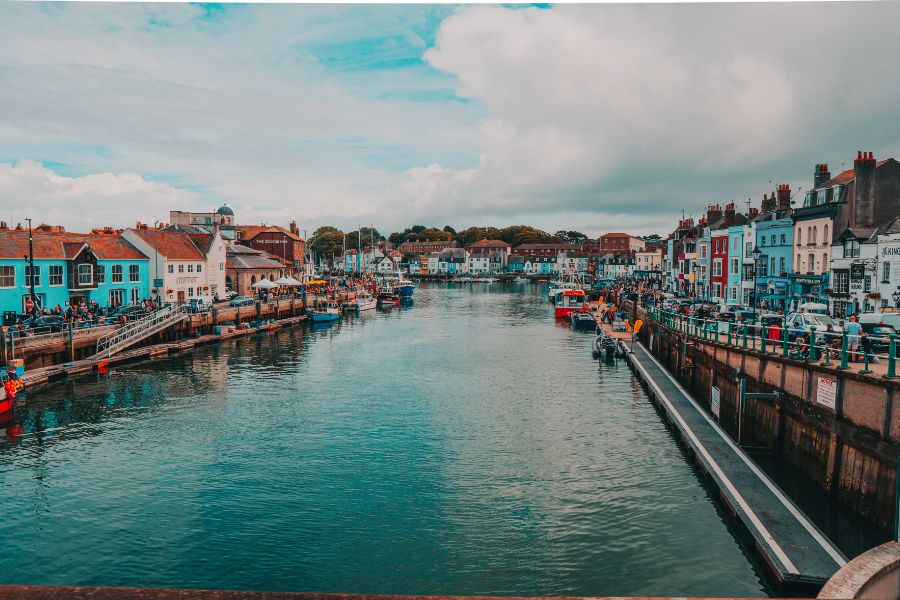
Sometimes, I hop on a train to Bournemouth and catch a ferry to the Isle of Wight. Here’s a quick look at some main connections:
| Starting Point | Destination | Public Transport Options |
|---|---|---|
| London | Weymouth | Train |
| Weymouth | Lyme Regis | Bus |
| West Bay | Golden Cap | Bus + Walk |
| Bournemouth | Isle of Wight | Train + Ferry |
Must-Pack Items: Magnifying Glass, Guidebooks, and More
Fossil hunting gets a lot easier when you pack the right gear. I never leave home without a magnifying glass—it’s perfect for spotting tiny ammonites or shells hidden in the shingle. I keep a notepad and pencil handy for jotting down what I find.
A sturdy bag or small box helps carry any treasures. I also bring a simple fossil guidebook, though printable charts from websites work in a pinch. Strong shoes with decent grip are a must, and I always toss in a lightweight raincoat because Dorset weather loves to surprise you.
Here’s what I usually pack:
- Magnifying glass
- Small fossil guidebook
- Sturdy bag or box
- Notepad and pencil
- Waterproof jacket
- Snacks and water
- Sun hat and sunscreen
Wildlife Watching While Exploring the Jurassic Coast
It’s not just fossils that make Dorset special. I keep my eyes peeled for wildlife every time I’m out. The coast is packed with nature—rare birds, butterflies, wildflowers, and more. Oystercatchers and fulmars nest on rocky ledges, and wild rabbits dart through the grass near Golden Cap.
Low tide uncovers rock pools full of crabs, little fish, and sea anemones, especially at Charmouth and Kimmeridge. I try to move quietly and keep my distance, especially when birds are nesting. Binoculars come in handy for spotting birds along the cliffs.
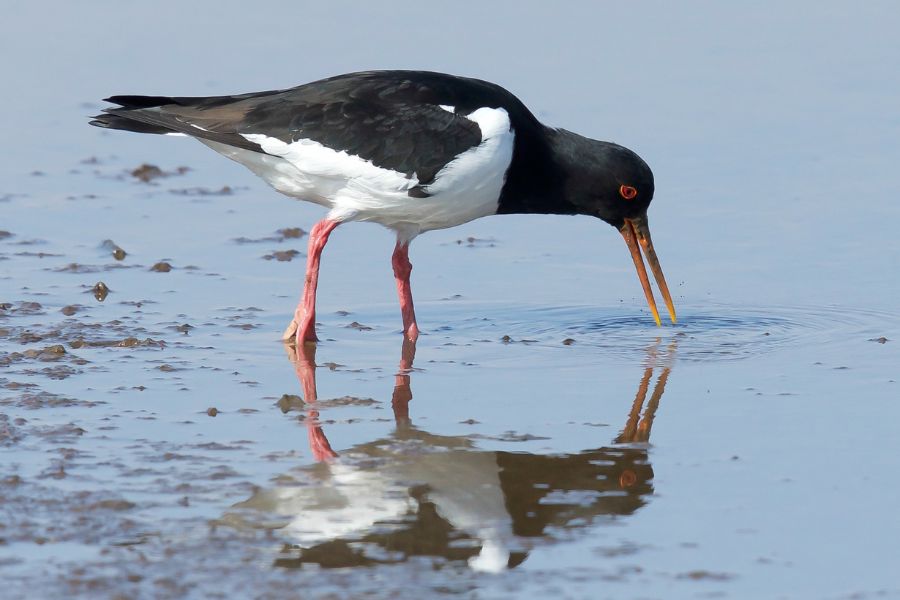
Every now and then, if I’m lucky, I’ll spot dolphins offshore or see seals lounging on the rocks. I always stick to marked paths—not just for my safety, but for the wildlife, too.
Nearby Attractions: Golden Cap, East Devon, and Beyond
When I’m done with fossil hunting, I usually wander off to check out what’s nearby. Golden Cap stands out—it’s actually the highest point along England’s south coast, and the hike up there is worth every step.
The views? Absolutely sweeping. Sometimes the wind nearly knocks me sideways, but it’s all part of the fun. Walkers and fossil collectors both seem to adore this spot, and honestly, I get why.
Just across the border, the East Devon coast feels like a different world. The beaches are quieter, and those red sandstone cliffs give off a vibe that’s nothing like Dorset’s grey shales. It’s almost like stepping into another story.
If I’m feeling adventurous, I’ll catch a quick ferry to the Isle of Wight. That place has its own fossil sites—some say they’re even better than Dorset’s, though I’m not sure I’d go that far.
For anyone with a thing for geology or history, Yorkshire’s coast calls out, too. It’s a bit of a trek from Dorset, but it’s famous among fossil collectors.
Now and then, I’ll pop into a small museum or heritage center along the way. Seeing those Jurassic Coast fossil displays up close always adds something extra to the trip. It’s a reminder of just how much history lies beneath our feet.

